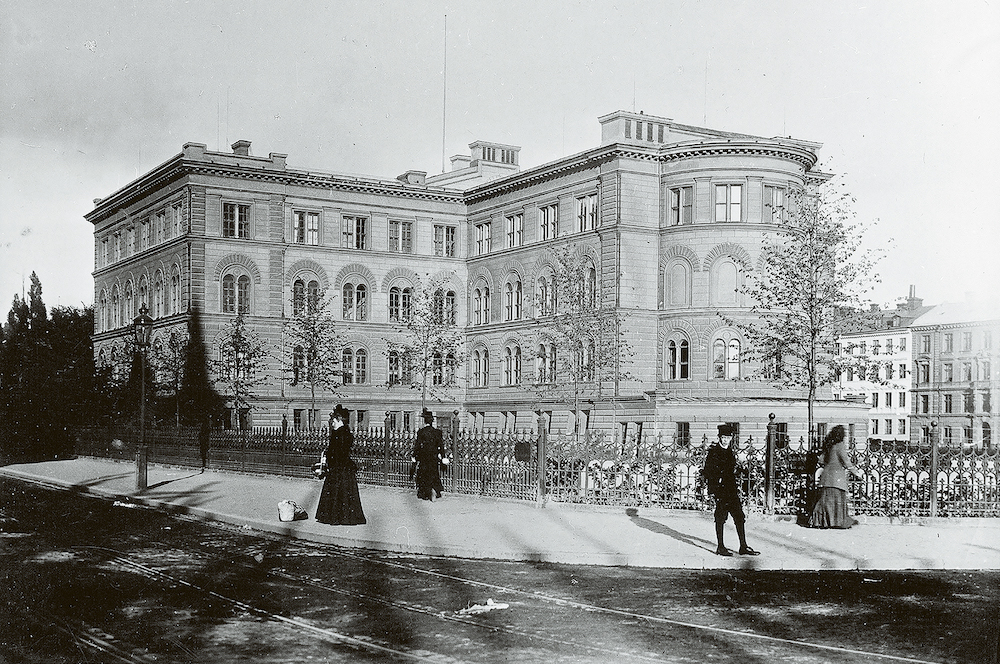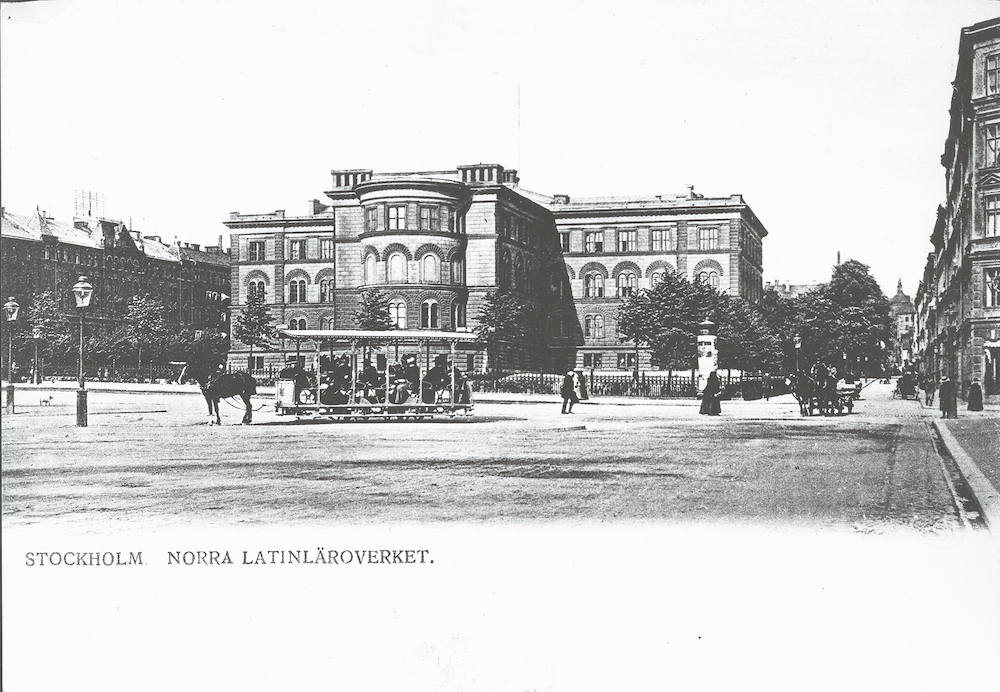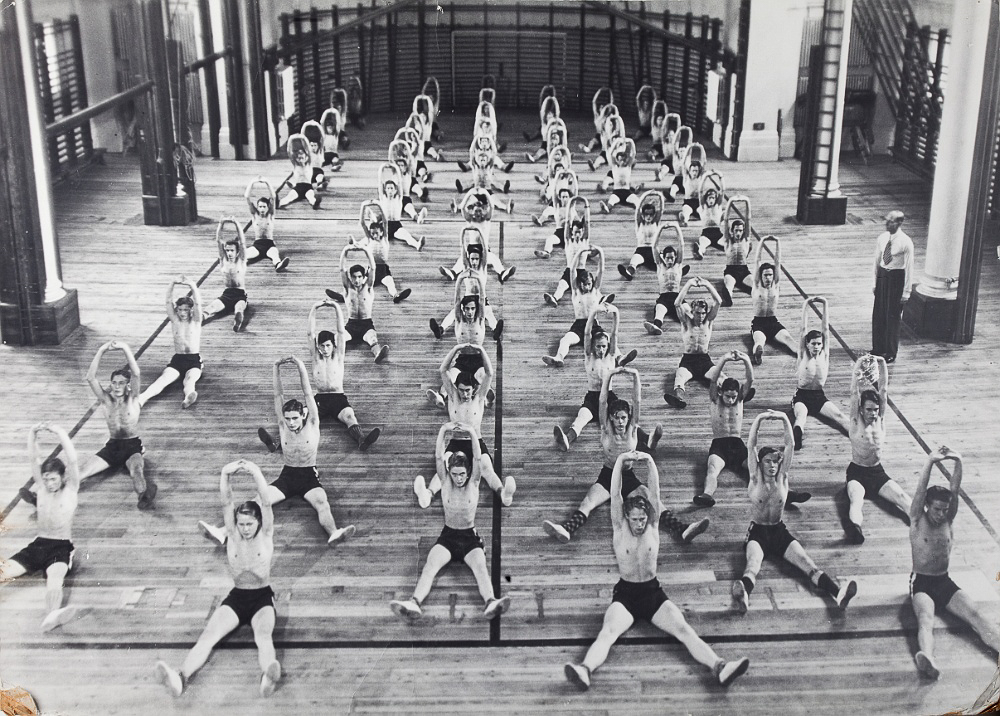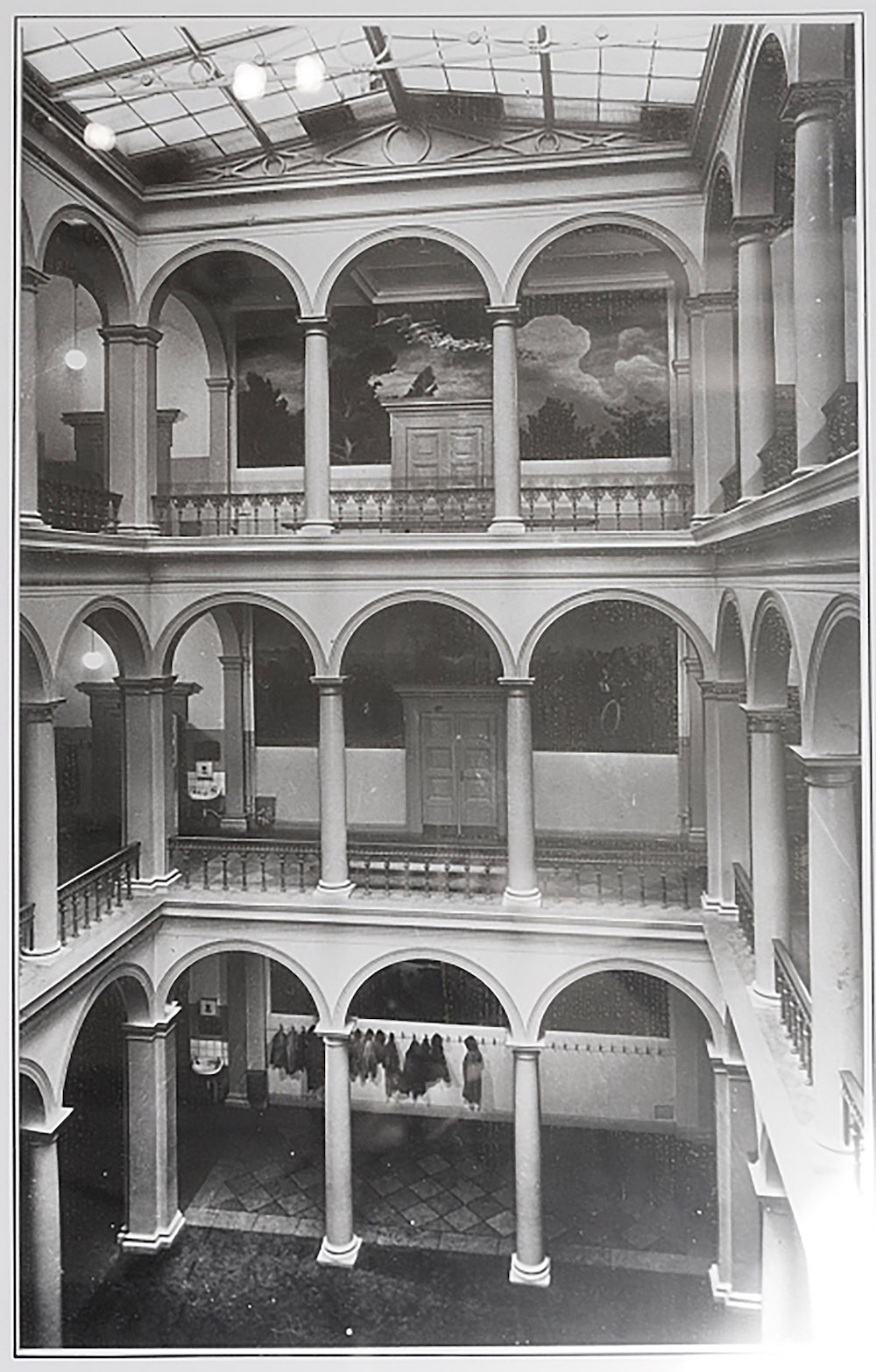The art at Norra Latin
The southern Ljusgården on the entrance level is dominated by Prince Eugene’s monumental painting “Den ljusa natten” from 1899. In the auditorium hangs the same artist’s “Sommar” from 1904. On the second floor of the southern courtyard is Carl Larsson’s fresco “Skolgossarnas korum” from 1901. On the floor above hangs Bruno Liljefors’ “Sträckande svanar” from 1900.
At the opposite end of the house, in the northern Ljusgården, is Axel Törneman’s mural “Engelbrekt vid Arboga riksdag” which is a full-scale sketch of one of the murals in Riksdagshuset. In Norra Latin, Eugéne Jansson, Otto Hesselbom and Hildur Hult, among others, are also represented. Many of the paintings are portraits of our most famous working-class poets, such as Ivar Lo Johansson, Harry Martinsson and Eyvind Johnsson. Modern artists can also be seen in Norra Latin. In connection with the interior renovation of the house in 2004-2005, the dining rooms were also redone and newer works were added from the collections. For example, one of the halls is adorned with paintings by Peter Dahl, and in another there are burlesque portraits of generals by the Italian Enrico Baj.
Norra Latin becomes a conference facility
As the city became more corporate, the student base became thinner and thinner. In recent years, it was children from Tensta who went to Norra Latin, and in 1984 the entire school business moved to Tensta. On January 13, 1989, Norra Latin reopened its gates, but now rebuilt and in a new form: as a conference, congress and concert hall.
Today, Norra Latin consists of 30 meeting rooms in different sizes. The auditorium has fixed furniture and can accommodate 400 people. Pelarsalen is almost the same size but more flexible when it comes to furnishing. The former classrooms are in different sizes, 9 of them are slightly larger, 16 are smaller and there are also two boardrooms. All rooms have large windows and access to the desired technology. Ljusgårdarna are used for coffee buffets, dinners, evening mingling and exhibitions.








